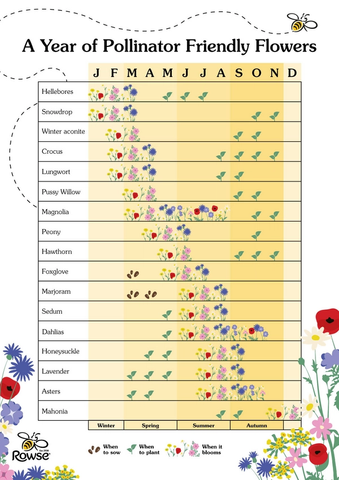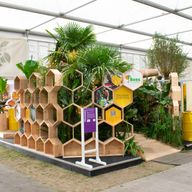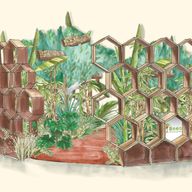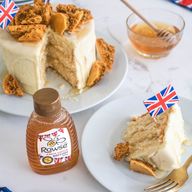
This four-season planting and flowering calendar will help gardeners of all abilities turn their outdoor spaces into a pollinator paradise buzzing with vivid jewel colours, sumptuous textures and evocative scents

More than ever, we’re discovering the wonderful health benefits that gardening brings to our lives, so it’s important to work out what needs to be done and when.
And it’s not just us who rely on nature’s nourishments. Pollinating insects need access to pollen-rich flora all year round to survive. Whether it’s the deep spring purples of the whimsically named Lungwort, the razzmatazz of summer dahlias, or the innocent whites of the winter snowdrop, garden plants provide a crucial food source for our buzzing buddies.
Sadly, as a nation the UK has lost up to 90% of its natural wildflower habitat. This has resulted in our miniature heroes, like the humble (and delightfully charming) honey bee, becoming ever more reliant on what we grow in our gardens, allotments, balconies and windowsills. That’s why Rowse Honey has made it its mission to protect the bees by restoring vital nectar sources as part of its Hives for Lives programme.
To help you keep your pollinator oasis buzzing throughout the seasons – even if you live in a city apartment without a garden – the experts at Rowse Honey have created a planting and flowering calendar that you and our pollinating pals will equally adore.
Spring Flowers
Lungwort
The lovely Lungwort flower grows low to the ground, and blooms early to bring food to the first pollinators of spring. They grow best in containers, so they’re great for planting in a small space!
Peony
These pink bee-auties are rich in pollen, and pollinating insects love their single blooms. Plant your peonies in rich, dry soil, right in the sun.
Magnolia
Our buzzing buddies are drawn to the magnificent Magnolia’s vibrant blooms, and love to snack on their sweet nectar! Magnolias love sun and soil with lots of moisture.
Pussy Willow
Pussy Willows’ pollen is high in protein, and the spring bloom provides an early source of nutrition for our busy friends.
Summer Flowers
Lavender
Lavender produces both pollen and nectar, making it a great food source for our bee-loved honey bees. They even create lavender-flavoured honey from the plant!
Foxglove
Honey bees and bumblebees work together to pollinate the fabulous Foxglove! How? The bumblebee creates holes in the side of the flower to make it easier for the humble honey bee to swoop in and access the flower’s pollen.
Hawthorn
Our hive heroes can make dark and rich honey from Hawthorn nectar. Yummy! This flower grows best in sunny conditions and is tolerant of all soil types.
Marjoram
Marjoram is a favourite of humans and our pollinating pals alike – these nectar-rich flowers are actually a perennial herb, better known as Oregano
Autumn Flowers
Asters
Amazing Asters need lots of water, but they’re worth it to keep our buzzing buddies happy! These flowers help honey bees build up reserves of pollen for winter, helping them through the cold months.
Honeysuckle
With a name like this, it’s no wonder pollinating insects love this flower! This tropical looking vine smells so sweet, our buzzing buddies can’t get enough.
Dahlias
Dazzling dahlias are single blooms, which pollinating insects prefer to multiple bloomers.
Sedum
Sedum flowers are perfect for the honey bees as a late source of pollen and nectar, helping to build up honey stores for the colder winter
Winter Flowers
Winter aconite
Winter aconite is not only a sign that spring has sprung to humans – this flower in the buttercup family is an early spring source of pollen for our buzzing friends too!
Hellebores
Hellebores provide sugar-rich nectar and high-protein pollen to help keep the bees energetic and strong through the middle of winter. They thrive in alkaline soil!
Snowdrop
Sensational snowdrop flowers provide rich n for bees when other food is hard to find in the winter.
Mahonia
These bright winter flowers produce lots of nectar – these are a wonderful way to liven up your garden in the winter!
Crocus
These hardy flowers can break through ice and snow to bring food to winter honey bees! Plant these in the sun where the bees like to forage, and watch your winter garden blossom into a honeybee haven!



